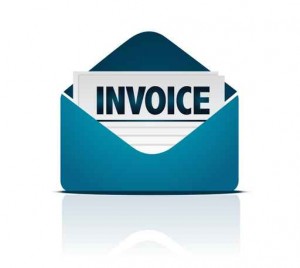This is the third article in our series that discusses how to reduce the paper flow through your office and speed up the Accounts Payable and Accounts Receivable function!
With escalating postage and mailing costs any company that sends out bulk mail such as customer letters, invoices and statements requires the flexibility to adopt a combination of either electronic and paper or solely electronic mailings.
How do you implement e-billing?
Firstly it helps to understand what the definition of e-billing is.
E-billing is often referred to as e-invoicing and customers often say “we are sending out invoices” so what is the difference?
The use of the two terms depends on your perspective as a buyer or a seller.
If you are buying in services managing incoming invoices within the accounts payable department the electronic invoicing process is part of the order to pay process and is e-invoicing.
E-invoicing is a buyer centric model where the buyer actively encourages its suppliers to send them electronic invoices.
If you are selling services and you are sending bills out to your customers via the accounts receivable department the electronic invoicing process is part of the order to cash process and is called e-billing.
E-billing is a supplier centric model where the supplier encourages its customers to receive electronic invoices instead of paper based ones and is less complex to implement than e-invoicing.
In both cases, invoices are processed but the difference is that those invoices that are inbound are referred to as e-invoices and those invoices that are outbound are e-bills. In each case invoices are processed but whether you are a seller or buyer determines whether the process is B2B e-invoicing or B2B e-billing.
Many companies and organisations alike will operate a combination of both the above processes but the functions may not be electronic or automated and likely to be manually intensive.
How do you adopt paperless billing?
One of the first challenges presented by the customer is: ” it just won’t work our customers like paper too much!” to which my response “have you asked them?
If you want to achieve significant customer adoption then you don’t ask you have a strategic, planned, well thought out campaign to turn off paper and get your customers accepting e-bills.
For more information call us now
Here are 10 top tips to achieving ebilling uptake!
- Have a clearly defined idea and strategy as to how you intend to implement e-billing
- Do not think that by having a customer portal on your website where customers login and download their bill will drive your customers in droves to click and register so they can collect their bill. It wont work! Its a bit like asking your customers to drive to your reception and collect their invoices. In reality, they’ll do nothing because a customer portal requires registration, password and a download
- Think PDF, not a PDF attachment to an email but a PDF that is emailed to your customer, think engaging, personalised and interactive information that incorporates facts, figures andpersonalised marketing messages, are secure and has embedded data which can be extracted out of the PDF
- Have a clear strategy for collecting email addresses
- Use your website to drive paperless billing and to advise customers how easy it will be for them to switch off paper
- Use messages on all your printed invoices, statements, remittances and envelopes to turn off paper
- Have a sign up process on your website, on your paper invoices and statements
- Use an email pre-registration campaign for opt in and opt out to encourage the take up of paperless bills
- Use any marketing collateral sent out to advise customers you are moving to paperless billing to drive the message home
- Use the process to demonstrate your company’s on-going commitment to being green
How successful was it?
Can e-billing work for the SME or is it the sole preserve of the bigger corporations and Utility companies?
You can find Digital Print Management on twitter, facebook, pinterest and linkedin or connect with us at google+


